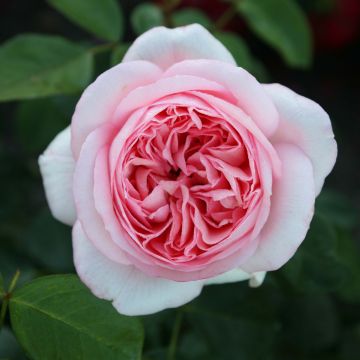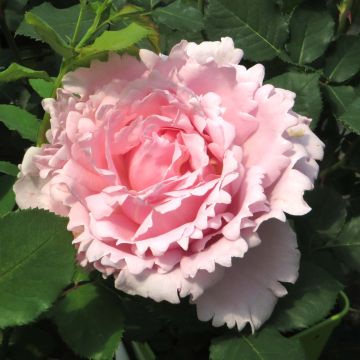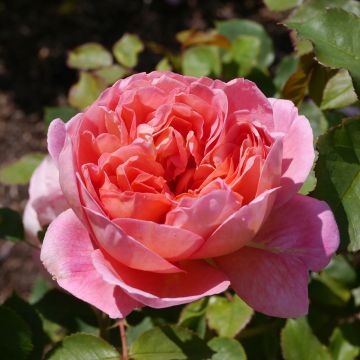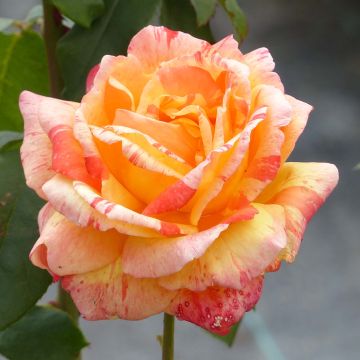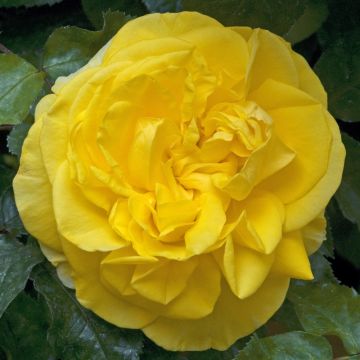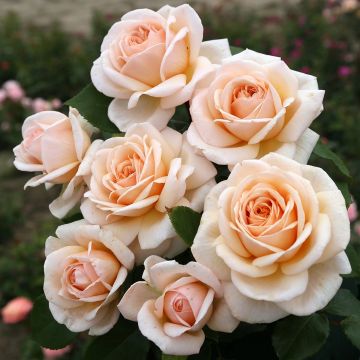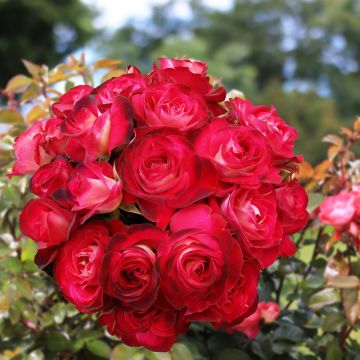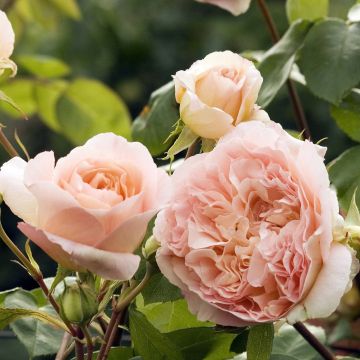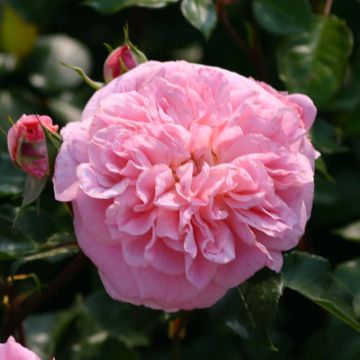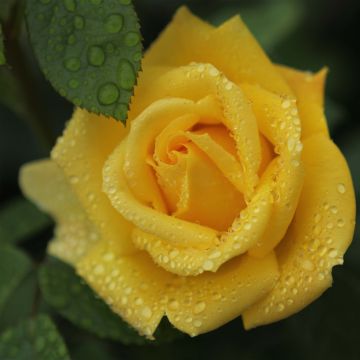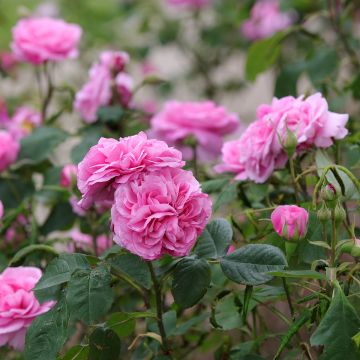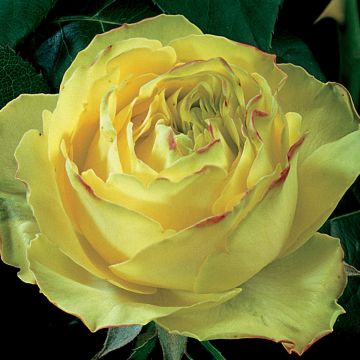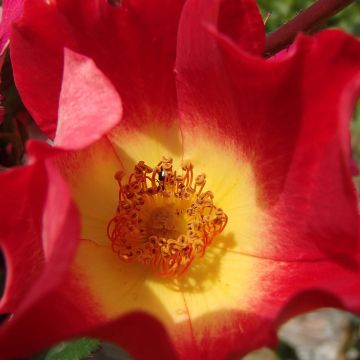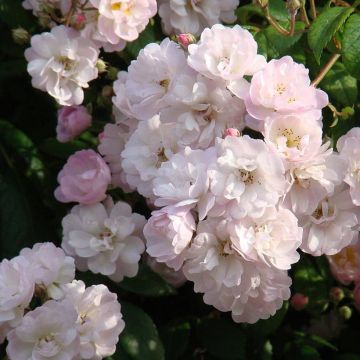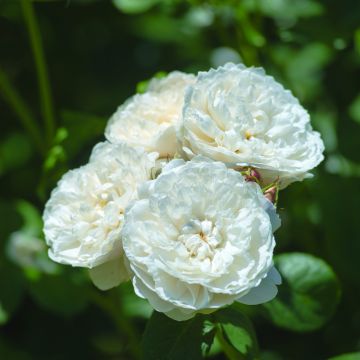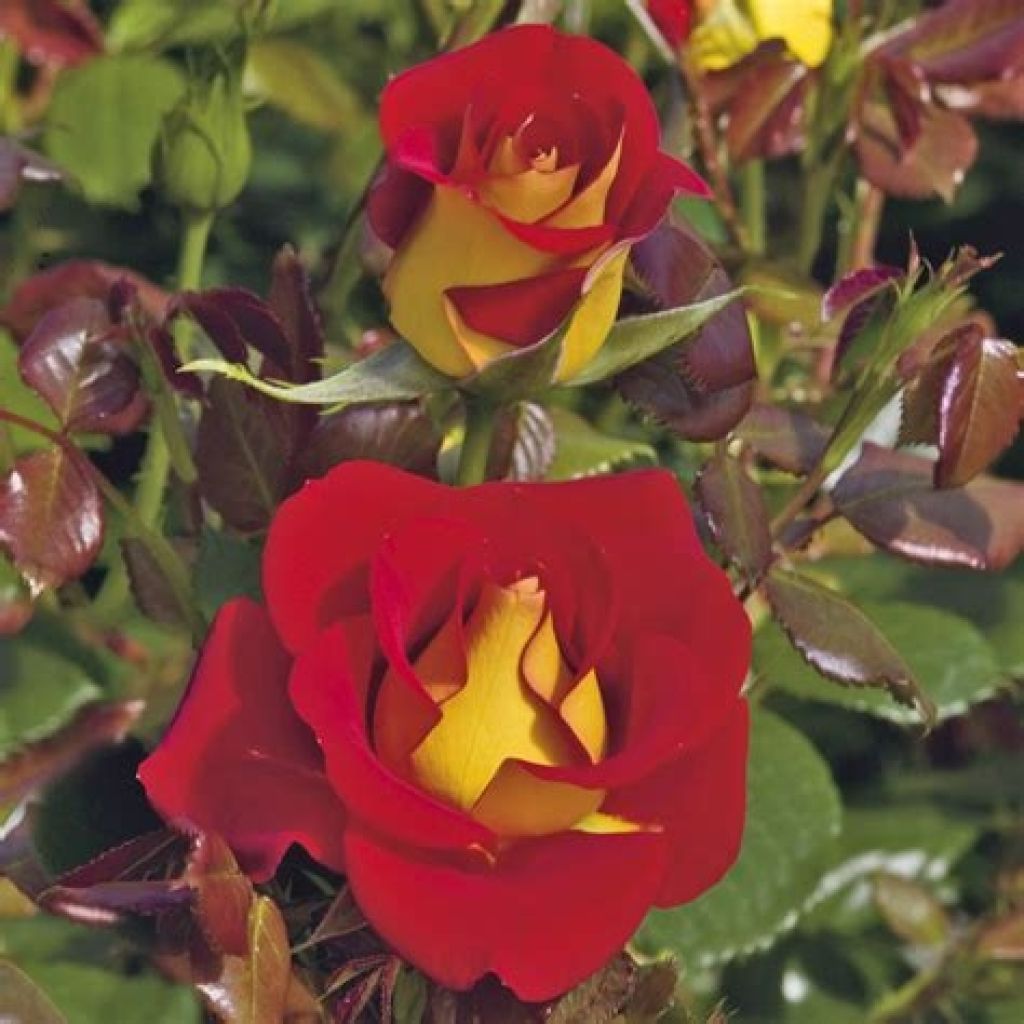

Rosa Ketchup & Mustard
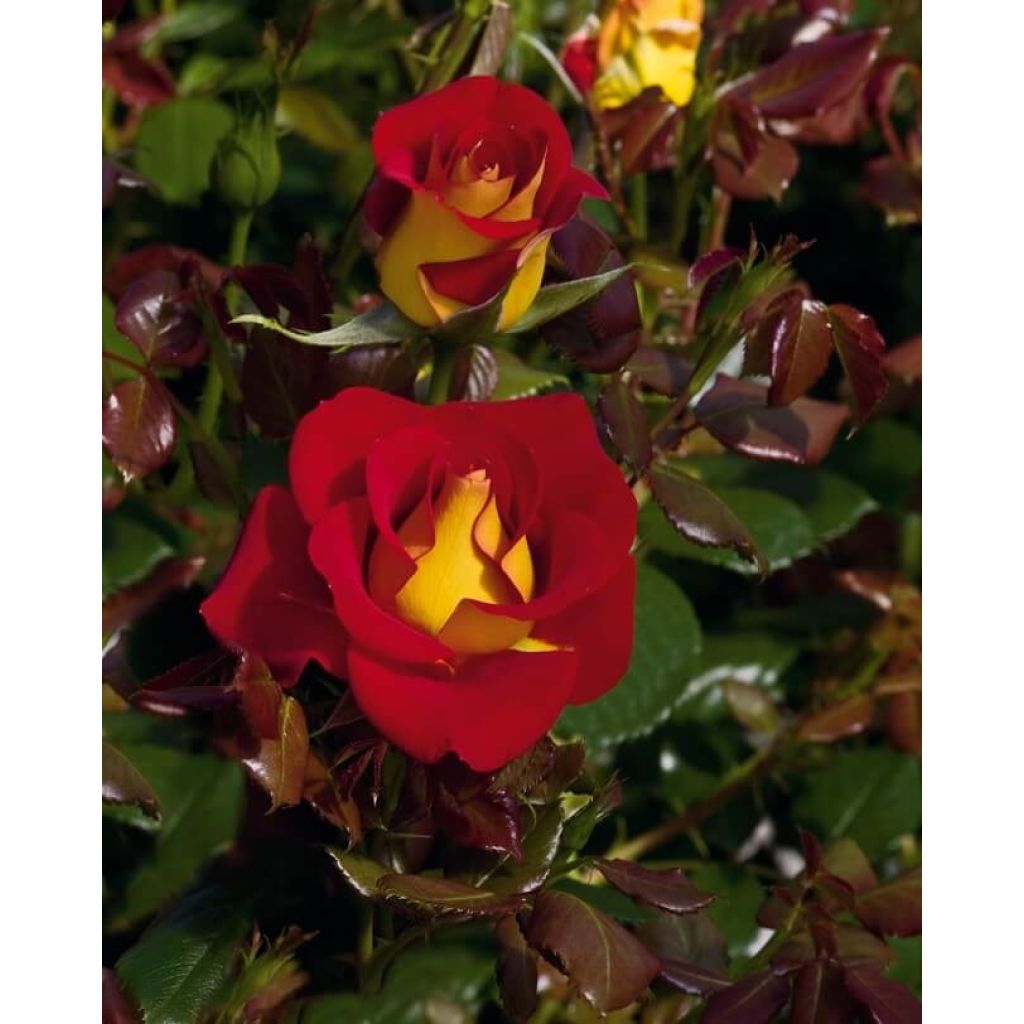

Rosa Ketchup & Mustard
Rosa Ketchup & Mustard
Rosa Ketchup & Mustard ® Wekzazette
Rose
Very pretty! Struggling to spread out but maybe next year...
Sophie, 04/11/2024
This item cannot be shipped to the selected country
Delivery charge from €5.90
Delivery charge from €5.90
Delivery to Corse prohibited
More information
Schedule delivery date,
and select date in basket
This plant carries a 24 months recovery warranty
More information
We guarantee the quality of our plants for a full growing cycle, and will replace at our expense any plant that fails to recover under normal climatic and planting conditions.
From €5.90 for pickup delivery and €6.90 for home delivery
Express home delivery from €8.90.
From €5.90 for pickup delivery and €6.90 for home delivery
Express home delivery from €8.90.
Delivery to Corse prohibited: UE law prohibits the import of this plant from mainland France to Corse as part of the fight against Xylella fastidiosa. Please accept our sincere apologies.
More information
Does this plant fit my garden?
Set up your Plantfit profile →
Description
The Ketchup & Mustard ® Rose Bush is a modern hybrid with some of the most contrasting bicoloured flowers you can admire: its typical turbinate roses of the tea hybrid variety proudly display intensely red petals that reveal a mustard yellow reverse. They bloom in clusters on a vigorous and healthy bush, and their colour, which remains harmonious despite its intensity, is perfectly highlighted by a glossy dark green foliage. This perpetual rose brings colour to flowerbeds and its roses last a long time in a vase.
'Ketchup & Mustard' (Wekzazette) is a large-flowered bush rose obtained in 2011 in the USA by Christian Bédard. It is a bushy and upright shrub that reaches 90cm (35in) to 1m (3ft) in height and 60cm (24in) in width at maturity, with rapid growth. It produces strong, somewhat rigid, thorny branches that bear beautiful copper-red young shoots. They unfold into very elegant, sturdy foliage that turns glossy dark green. It is not very susceptible to diseases. Throughout the summer, if care is taken to remove faded flowers, the plant continuously produces large, perfectly shaped, turbinate flowers measuring 8cm (3in) in diameter, composed of 17 to 20 petals. They are solitary or grouped in small bouquets and carried at the end of long shoots from the current year or emerging from 2-year-old stems. The flowering is devoid of fragrance. The deciduous foliage falls in autumn and reappears in spring.
This Ketchup & Mustard rose, with its striking colour, is ideal as a solitary plant in a well-kept small garden. It is also perfect for use in large monochrome borders, as its highly contrasting colour is quite difficult to match. For example, it can be associated with white Panicled Phlox, red Penstemon, daisies, chocolate cosmos, as well as the dark foliage of certain Physocarpus ('Burgundy Candy'), or the feathery foliage of bronze fennel. Its cut flowers, with good longevity, are naturally perfect for bouquets.
Report an error about the product description
Plant habit
Flowering
Foliage
Botanical data
Rosa
Ketchup & Mustard ® Wekzazette
Rosaceae
Rose
Cultivar or hybrid
Other Large-flower tea Roses
Planting and care
Plant your Ketchup & Mustard Rose bush in a sunny or lightly shaded position. Modern roses are tolerant but do not appreciate an excess of limestone. They will adapt to any garden as long as the soil is well worked, not too heavy, and sufficiently rich. To plant your rose, work the soil by crumbling it and put an amendment, such as dried blood or dehydrated horn, at the bottom of the planting hole. Water generously after planting to remove any air pockets. Water regularly for a few weeks to facilitate root growth.
Pruning modern perpetual roses is essential for flowering. It is done in three stages:
1. Maintenance pruning : regularly shorten the flowering branches throughout the season. To encourage the reblooming of perpetual roses, remove faded flowers at the same time as their stem, leaving 2 or 3 leaves.
2. Preparatory pruning in autumn : light pruning that anticipates the proper spring pruning.
In regions with cold winters, it is not recommended to avoid weakening the bush.
3. Spring pruning : in February-March, when the buds have become shoots 2 to 3cm (1in) long: prune the young strong branches by a quarter of their length.
Pruning always aims to clear the heart of the bush and remove dead wood, diseased branches, and weak shoots. The most vigorous ones should be kept, usually 3 to 6 well-positioned branches, to maintain a beautiful habit. Always prune at an angle ½ cm or 1cm above a bud facing outward.
Planting period
Intended location
Care
-
, onOrder confirmed
Reply from on Promesse de fleurs
Fragrant Roses
Haven't found what you were looking for?
Hardiness is the lowest winter temperature a plant can endure without suffering serious damage or even dying. However, hardiness is affected by location (a sheltered area, such as a patio), protection (winter cover) and soil type (hardiness is improved by well-drained soil).

Photo Sharing Terms & Conditions
In order to encourage gardeners to interact and share their experiences, Promesse de fleurs offers various media enabling content to be uploaded onto its Site - in particular via the ‘Photo sharing’ module.
The User agrees to refrain from:
- Posting any content that is illegal, prejudicial, insulting, racist, inciteful to hatred, revisionist, contrary to public decency, that infringes on privacy or on the privacy rights of third parties, in particular the publicity rights of persons and goods, intellectual property rights, or the right to privacy.
- Submitting content on behalf of a third party;
- Impersonate the identity of a third party and/or publish any personal information about a third party;
In general, the User undertakes to refrain from any unethical behaviour.
All Content (in particular text, comments, files, images, photos, videos, creative works, etc.), which may be subject to property or intellectual property rights, image or other private rights, shall remain the property of the User, subject to the limited rights granted by the terms of the licence granted by Promesse de fleurs as stated below. Users are at liberty to publish or not to publish such Content on the Site, notably via the ‘Photo Sharing’ facility, and accept that this Content shall be made public and freely accessible, notably on the Internet.
Users further acknowledge, undertake to have ,and guarantee that they hold all necessary rights and permissions to publish such material on the Site, in particular with regard to the legislation in force pertaining to any privacy, property, intellectual property, image, or contractual rights, or rights of any other nature. By publishing such Content on the Site, Users acknowledge accepting full liability as publishers of the Content within the meaning of the law, and grant Promesse de fleurs, free of charge, an inclusive, worldwide licence for the said Content for the entire duration of its publication, including all reproduction, representation, up/downloading, displaying, performing, transmission, and storage rights.
Users also grant permission for their name to be linked to the Content and accept that this link may not always be made available.
By engaging in posting material, Users consent to their Content becoming automatically accessible on the Internet, in particular on other sites and/or blogs and/or web pages of the Promesse de fleurs site, including in particular social pages and the Promesse de fleurs catalogue.
Users may secure the removal of entrusted content free of charge by issuing a simple request via our contact form.
The flowering period indicated on our website applies to countries and regions located in USDA zone 8 (France, the United Kingdom, Ireland, the Netherlands, etc.)
It will vary according to where you live:
- In zones 9 to 10 (Italy, Spain, Greece, etc.), flowering will occur about 2 to 4 weeks earlier.
- In zones 6 to 7 (Germany, Poland, Slovenia, and lower mountainous regions), flowering will be delayed by 2 to 3 weeks.
- In zone 5 (Central Europe, Scandinavia), blooming will be delayed by 3 to 5 weeks.
In temperate climates, pruning of spring-flowering shrubs (forsythia, spireas, etc.) should be done just after flowering.
Pruning of summer-flowering shrubs (Indian Lilac, Perovskia, etc.) can be done in winter or spring.
In cold regions as well as with frost-sensitive plants, avoid pruning too early when severe frosts may still occur.
The planting period indicated on our website applies to countries and regions located in USDA zone 8 (France, United Kingdom, Ireland, Netherlands).
It will vary according to where you live:
- In Mediterranean zones (Marseille, Madrid, Milan, etc.), autumn and winter are the best planting periods.
- In continental zones (Strasbourg, Munich, Vienna, etc.), delay planting by 2 to 3 weeks in spring and bring it forward by 2 to 4 weeks in autumn.
- In mountainous regions (the Alps, Pyrenees, Carpathians, etc.), it is best to plant in late spring (May-June) or late summer (August-September).
The harvesting period indicated on our website applies to countries and regions in USDA zone 8 (France, England, Ireland, the Netherlands).
In colder areas (Scandinavia, Poland, Austria...) fruit and vegetable harvests are likely to be delayed by 3-4 weeks.
In warmer areas (Italy, Spain, Greece, etc.), harvesting will probably take place earlier, depending on weather conditions.
The sowing periods indicated on our website apply to countries and regions within USDA Zone 8 (France, UK, Ireland, Netherlands).
In colder areas (Scandinavia, Poland, Austria...), delay any outdoor sowing by 3-4 weeks, or sow under glass.
In warmer climes (Italy, Spain, Greece, etc.), bring outdoor sowing forward by a few weeks.


































